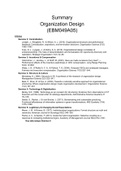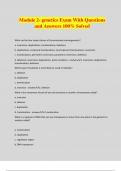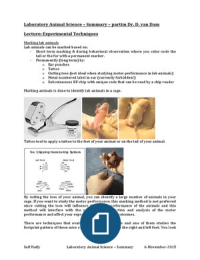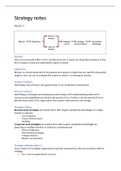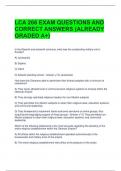Summary
Summary Organization Design (EBM049A05) - (ALL Mandatory Articles)
- Course
- Institution
In this summary you will find all mandatory articles for the course Organization Design (MSc) (EBM049A05). All articles covered in the seminars are described in detail in this summary! The structure of the document makes it easy to read and ensures a pleasant, structured preparation for the exam!
[Show more]
